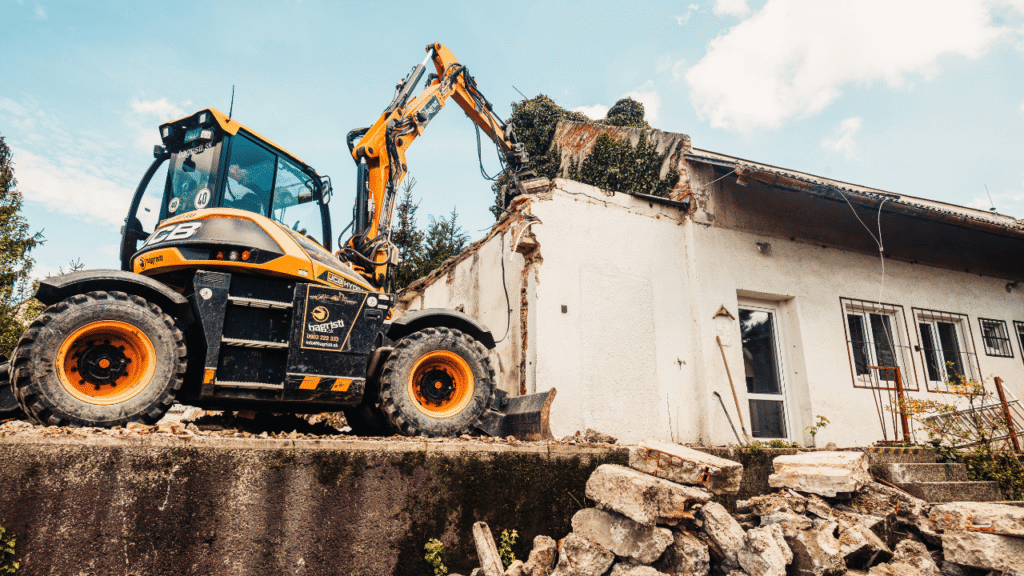Once upon a time, demolition and infrastructure repair were defined by brute strength, noise, and clouds of dust. Workers relied on jackhammers, saws, and heavy equipment that made the job as physically demanding as it was dangerous. Today, however, the construction world is entering a new era. Modern tools and cutting-edge techniques are redefining how we approach both destruction and repair—making them faster, cleaner, and safer than ever before.
Whether it’s tearing down an outdated structure or rehabilitating a critical section of roadway, precision technology is the new standard. Advanced cutting systems, automated machinery, and safety-focused designs have replaced the guesswork of old-school demolition. What used to take a full day of loud, labor-intensive work can now be done in a fraction of the time with less risk and disruption to surrounding areas. For anyone curious about the innovations driving infrastructure repair, a great place to start is the MrManhole website, which showcases how precise engineering can completely change the game.
From Chaos to Control: The Science Behind Modern Demolition
Demolition has evolved far beyond the image of wrecking balls and swinging hammers. Modern professionals treat it as a calculated science—an essential part of the rebuilding process rather than a necessary mess. Every cut, lift, and removal is planned to minimize damage, control debris, and protect workers and nearby structures.
Tools today are designed for precision. Hydraulic shears, robotic demolition machines, and advanced cutting systems allow crews to remove materials in targeted ways instead of simply tearing everything apart. This precision also means fewer surprises. Sensors and remote-controlled equipment can detect stress points and identify hidden hazards before work begins.
Safety and efficiency are now inseparable. Many tools are designed to reduce vibrations and noise levels, protecting both workers and nearby residents. Meanwhile, recycling and reuse have become key priorities. By salvaging materials like steel, copper, and concrete, crews reduce waste and environmental impact. For those preparing for home renovation or structural teardown, understanding how to demolish a house safely and legally can make all the difference between a smooth project and a costly mistake.
Precision in Infrastructure Repair: Cutting Without the Chaos
In the world of infrastructure maintenance, accuracy is everything. Roads, bridges, and underground systems can’t afford sloppy repairs. One small error could lead to water leaks, uneven surfaces, or long-term structural damage. Fortunately, the latest generation of tools allows workers to handle repairs with surgical precision.
Circular cutting systems, for instance, have replaced traditional square-cut methods in manhole and utility maintenance. The result? Cleaner cuts, fewer cracks, and minimal disturbance to the surrounding pavement. These tools not only reduce labor time but also enhance safety by eliminating the need for jackhammers and manual chiseling.
Modern cutters and lifting systems can remove and replace heavy components—like manhole frames or access lids—in minutes instead of hours. The process produces less debris, requires smaller crews, and dramatically improves consistency. It’s a perfect example of how engineering innovation is streamlining one of the least glamorous but most critical parts of urban infrastructure.
Why Efficiency and Sustainability Go Hand in Hand
Construction and demolition used to be industries notorious for waste. But that’s changing fast. Today’s equipment manufacturers and service providers understand that efficiency isn’t just about time—it’s about sustainability. The less energy, fuel, and material a project consumes, the better the outcome for everyone involved.
In demolition, precise removal allows for better material recovery. Metal components can be melted down and reused, concrete can be crushed for aggregate, and wood can be repurposed rather than discarded. The same mindset applies to infrastructure repair, where accurate cuts and clean replacements mean fewer wasted materials and less need for repeat work.
Modern equipment also consumes less energy. Lightweight machinery and improved hydraulics reduce fuel use while delivering the same or greater power output. And because newer tools generate less dust and noise, they contribute to safer job sites and healthier communities.
Sustainability has evolved from a buzzword into a measurable advantage. Contractors that prioritize clean, efficient processes not only save money but also meet growing environmental standards and public expectations.
The Role of Technology and Training
Technology is at the heart of this transformation, but human expertise remains essential. The best results happen when skilled professionals combine hands-on experience with cutting-edge equipment. New systems are designed to be user-friendly, yet they still require trained operators who understand how to read site conditions, adjust settings, and troubleshoot on the fly.
Virtual training programs and digital manuals now make it easier for workers to learn the ins and outs of advanced machinery. Augmented reality tools even allow operators to practice complex procedures before stepping onto a real job site. These innovations not only shorten the learning curve but also prevent accidents by building confidence and familiarity in a safe environment.
At the same time, teamwork between machine operators, engineers, and safety supervisors has become more integrated. Real-time communication and monitoring systems ensure that every part of a project—from demolition to repair—runs smoothly and stays within compliance standards.
A Safer Future for the Workforce
Perhaps the most profound change in this new era of construction is the emphasis on worker safety. In the past, demolition and infrastructure repair ranked among the most hazardous jobs due to exposure to dust, vibration, noise, and heavy equipment. Modern machinery is designed to eliminate or drastically reduce those dangers.
Automated cutting systems keep operators at a safe distance, while protective shields and containment systems prevent flying debris. Anti-vibration technology reduces long-term joint and nerve injuries, and quieter machines protect workers’ hearing. By focusing on ergonomics and safety, manufacturers are helping workers stay healthier and more productive for longer careers.
The shift toward smarter, safer tools reflects a larger truth: innovation isn’t just about speed or profit—it’s about people. The goal of modern construction technology is to make tough jobs safer, cleaner, and more sustainable for the next generation.
Building a Smarter Tomorrow
From residential demolitions to urban infrastructure repairs, technology is rewriting the rules of how we build, break, and rebuild. The industry is moving toward precision, sustainability, and accountability, leaving behind outdated methods that relied on guesswork and muscle alone.
For property owners, homeowners, and municipalities alike, these innovations mean shorter project timelines, cleaner results, and safer communities. For the professionals in the field, it means less strain, better tools, and more opportunities to grow through technology.
Modern construction isn’t just about replacing what’s old—it’s about improving how we create and maintain the world around us. The future of demolition and repair is here, and it’s built on a foundation of intelligence, precision, and care for both people and the planet.





